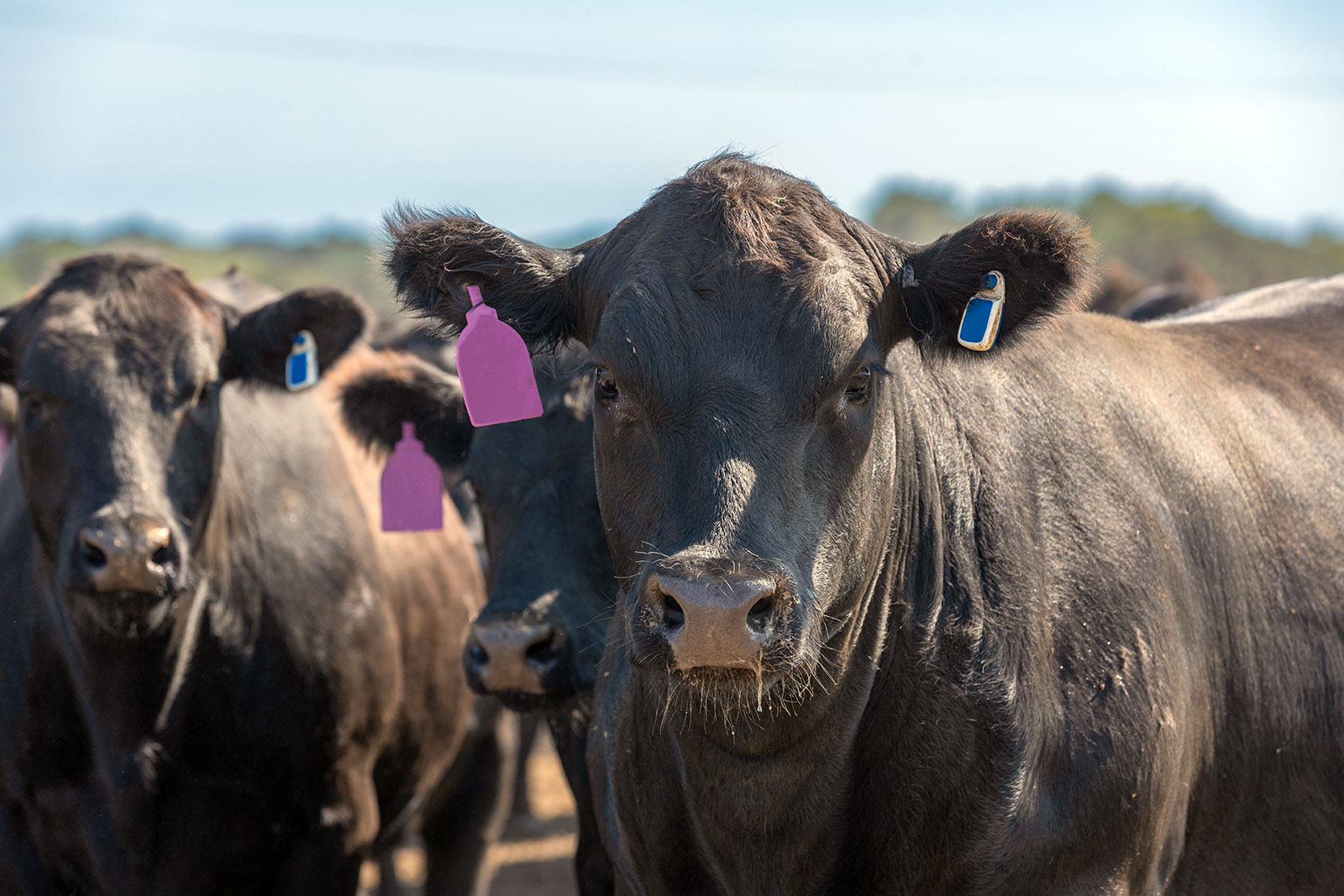An individual feeding experiment was conducted to evaluate the effect of using whole soybeans (WSB), roasted (RSB) soybeans or distillers grains (MDGS) at three inclusions (7%. 14%, or 21% of diet dry matter) on growing performance. Crossbred heifers (n = 119, initial BW = 311kg ± 5.8kg) were utilized in a 3×3 factorial treatment design with 11 replications per treatment for each protein source. Additionally, a dry-rolled corn with urea treatment serving as a control (CON) contained 20 replications. Performance data were analyzed as a 3×3 factorial using the MIXED procedure of SAS assessing interactions between protein source and inclusion with the individual animal as the experimental unit. No significant interactions between diet type and inclusion for any variable were observed (P > 0.10). Including MDGS in the diet resulted in greater dry matter intake (DMI) (P < 0.01) than the soybean diets. For gain (ADG), a protein source effect (P = 0.02) was observed with the MDGS treatment resulting in increased gain compared to the WSB treatment. An inclusion effect for ADG was also observed, with greater ADG associated with the 21% inclusion (P = 0.01). Cattle fed diets containing RSB had greater feed efficiency (P = 0.01) than the MDGS and WSB treatments. An inclusion effect for feed efficiency was observed, with a 21% inclusion resulting in greater efficiency than the 14% inclusion (P = 0.08). When responses were evaluated using the common intercept (CON), a linear response was observed for the inclusion rates by protein type for ending weight regarding MDGS (P = 0.01) and WSB (P = 0.05) with increasing ending weight with increased inclusion. A linear increase in DMI was observed for cattle fed increasing inclusion of MDGS (P < 0.01), whereas a quadratic decrease was observed with the RSB treatments (P = 0.05). ADG increased linearly for the WSB diets by inclusion rate (P < 0.01), however, a cubic response was observed for MDGS (P = 0.08) and RSB (P = 0.04). Cubic responses were present for feed efficiency in the MDGS (P = 0.04), WSB (P = 0.10), and RSB (P = 0.03) treatments due to an increase from 0 to 7% inclusion, then no further improvement when 14% was fed, and then increased again with a 21% inclusion. In general, it appears to be a quadratic and linear increase but the response at 14% inclusion is unclear. One explanation is that treatments met the protein requirement up to 14% inclusion, but the response at 21% was due to energy displacement. Based on feed efficiency and ADG, feeding whole soybeans in silage growing diets performs similar to supplementing distillers grains, whereas feeding roasted soybeans is slightly better than both.
Bausch, M., R. McDermott, J. MacDonald, P. Loza and G. Erickson. 2025. Effect of using whole soybeans, roasted soybeans, or distillers grains in silage-based growing beef diets. 2025 American Society of Animal Science Midwest Section meeting, Abstract PSV-4.
